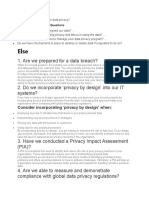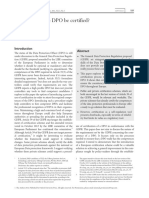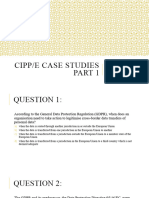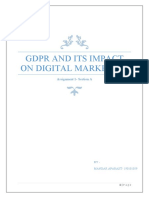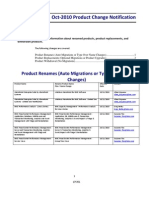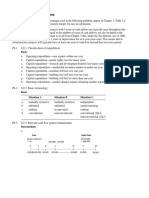0% found this document useful (0 votes)
90 views10 pagesGDPR Ecommerce Guidelines
This document provides guidelines for ecommerce businesses to comply with the GDPR (General Data Protection Regulation). Key points include:
1) Consent from users is required to collect and use their personal data. Only collect data needed for business purposes and be transparent about how it will be used.
2) Make privacy policies, terms and conditions, and options to opt-out or delete data very clear and visible.
3) Major tech platforms like Google and Mailchimp are working to be GDPR compliant, so ecommerce businesses can continue using common marketing tools while complying with GDPR. Compliance is an opportunity to gain customers in Europe by emphasizing privacy practices.
Uploaded by
Sound StormCopyright
© © All Rights Reserved
We take content rights seriously. If you suspect this is your content, claim it here.
Available Formats
Download as DOCX, PDF, TXT or read online on Scribd
0% found this document useful (0 votes)
90 views10 pagesGDPR Ecommerce Guidelines
This document provides guidelines for ecommerce businesses to comply with the GDPR (General Data Protection Regulation). Key points include:
1) Consent from users is required to collect and use their personal data. Only collect data needed for business purposes and be transparent about how it will be used.
2) Make privacy policies, terms and conditions, and options to opt-out or delete data very clear and visible.
3) Major tech platforms like Google and Mailchimp are working to be GDPR compliant, so ecommerce businesses can continue using common marketing tools while complying with GDPR. Compliance is an opportunity to gain customers in Europe by emphasizing privacy practices.
Uploaded by
Sound StormCopyright
© © All Rights Reserved
We take content rights seriously. If you suspect this is your content, claim it here.
Available Formats
Download as DOCX, PDF, TXT or read online on Scribd
/ 10








